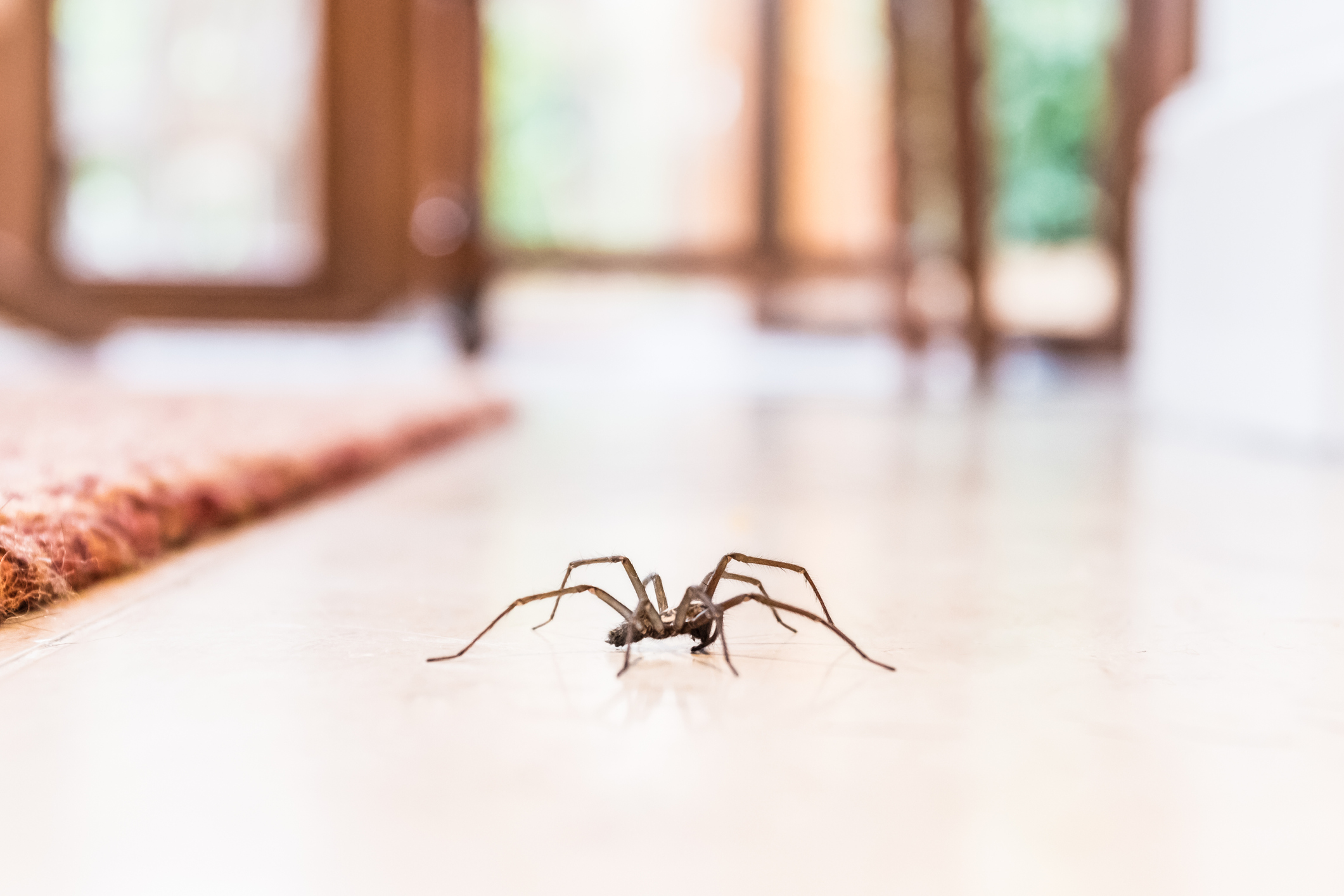Spiders or other insects that enter indoors are usually looking for warmth
As autumn leaves begin to turn and the temperature begins to drop, people aren’t the only ones looking to get cozy indoors, as many Iowans notice an increase in insect and spider populations around the home during fall. While finding unexpected spiders hiding around the home can be alarming for some, Zach Schumm, insect diagnostician with the Plant and Insect Diagnostic Clinic at Iowa State University, explains that most spiders in Iowa pose little threat to people.
Typically, spiders or other insects that enter indoors are looking for warmth, according to Schumm. While any spider has the potential to accidentally work its way indoors, the types of spiders commonly encountered in the home include wolf spiders, funnel weaving spiders, jumping spiders and cellar spiders.
“The common offenders are the spiders that are more noticeable, either because they are larger or we happen to see them when they aren’t hiding,” explained Schumm.
All spiders, which can be distinguished from most other arthropods by their eight legs and two body regions, have hollow fangs capable of injecting venom into their prey. However, as Schumm explains, this characteristic should not be a cause for concern for humans, as they only wish to use their fangs on their food, not on people.
“In the United States as a whole, there are very few medically significant spiders that people need to be concerned about. The typical offenders we hear about, the brown recluse and the black widow, are very uncommon in Iowa,” said Schumm. “In addition to being very uncommon, these spiders are typically nonaggressive toward people. Even when they do bite, they often dry bite, meaning that they bite without injecting any venom.”
Black widows, which can be distinguished by the red hourglass marking on the underside of their abdomen, have been found in Iowa before, but are uncommon. Even when encountered, these spiders are often described as shy, and prefer to flee from humans when threatened. While their venom is highly toxic, bites are typically not serious since a very small amount of venom is injected. Symptoms of a bite typically include pain and swelling at the site of the bite, headache, shortness of breath and muscle spasms. Very few black widow bites result in serious medical complications.
Brown recluses, the other main species of venomous spider that can be found in Iowa, are also incredibly uncommon. Although their range technically extends into the lower part of the state, they are considered uncommon to extremely rare in the upper Midwest. True to their name, they tend to avoid areas with human activity and rarely bite. They can be distinguished by the dark, violin-shaped marking on their front body section. While bites are not typically immediately painful, a localized burning sensation typically develops within a few hours, followed by raised or darkened skin surrounding the bite. For more information on venomous spiders in Iowa, visit the ISU Extension and Outreach publication “Potentially Dangerous Spiders.”
Since few Iowa spiders pose any real medical threat and are unaggressive, Schumm rarely recommends spraying insecticides around the home.
“Most spiders around the home are more of a nuisance than a medical issue, so I always recommend some level of tolerance,” said Schumm. “If you want to reduce their numbers, it’s important to seal up any small gaps where they may be entering the home. Putting on new door thresholds, repairing window screens and sealing up cracks can prevent spiders from coming indoors.”
“There are some options for managing spiders using insecticides after they’ve entered, but I would argue that those methods are less healthy and more expensive than letting the spiders be. However, if you’re allergic to spider venom or are finding those more medically significant species, you can put out sticky traps to monitor for presence and abundance of spiders or call a pest management company if needed,” he added.
While discovering an unwelcome, eight-legged roommate can be startling, it is rarely a cause for alarm.
“People generally tend to be fearful of spiders, but the spiders we see around our homes aren’t out to get us,” added Schumm. “Next time you find a spider around the house, take the time to observe it for a bit. The more we understand things, the less fearful we tend to be.”
For more information on common Iowa spiders, visit https://store.extension.iastate.edu/product/5267, or contact Zach Schumm at [email protected] or by calling 515-294-0581.




